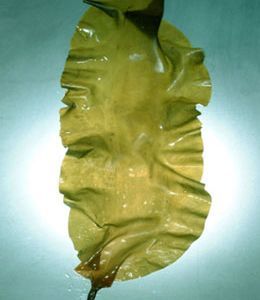The physiological role of iodine in the human body is achieved through the synthesis of thyroid hormone, which is one of the most important hormones in the body. What is the physiological role of iodine? 1. Maintain body energy metabolism (to decompose the substance to provide the energy needed for vital activities) and heat production (to maintain body temperature). Reduced synthesis of thyroid hormones caused by iodine deficiency can lead to impaired basic life activities and decreased physical fitness. This effect is lifelong. 2. Promote physical development. Thyroid hormone regulates bone development, sexual development, muscle development, and height and weight in children during growth and development. The lack of thyroid hormone can lead to backward physical development, sexual development, body dwarfness, muscle weakness and other developmental symptoms and signs. 3. Brain development. In the fetus or infant brain development must rely on thyroid hormone in a certain period of time, its lack will lead to different degrees of brain development, after birth, there will be varying degrees of mental retardation. This kind of barrier is basically irreversible, and supplementing iodine after a critical period will not help. However, iodine supplementation can also ensure normal physical development, correct hypothyroidism, restore physical fitness, and indirectly improve mental activity. Generally, foods high in iodine content are mostly seafood, such as kelp, seaweed, fresh octopus, clams, dried scallops, mussels, sea cucumbers, sea bream, lobsters, etc.; kelp has the highest iodine content and can reach 2000 micrograms/kg or more in fresh kelp. Followed by fish and sea shellfish (800 micrograms / kg or so). For terrestrial foods, eggs and milk contained the highest iodine content (4 to 90 μg/kg), followed by meat. The iodine content of freshwater fish was close to or slightly lower than that of meat, and the iodine content of plants was the lowest. In addition, the amount of iodine in the salt is minimal, the more refined salt contains less iodine, and the amount of iodine in sea salt is about 20 micrograms/kg. If you consume 10 grams of salt per day, you can only get 2 micrograms of iodine. , far from meeting the need to prevent iodine deficiency disorders. Iodine-rich food TOP10 (Iodine content per 100 grams of food) Kelp: 1 mg Laver (dry): 1800 μg Spinach: 164 μg Celery: 160 micrograms Marine fish: 80 micrograms Sea salt: 2 micrograms Yam: 14 micrograms Iodination salt: 7600 micrograms Chinese cabbage: 9.8 μg Eggs: 9.7 μg Health Tip: Iodine is not as much as possible to intake, too much iodine can cause changes in thyroid function, or increase the burden on the thyroid gland, making it hard. The maximum intake of iodine is 800 micrograms for children and 1000 micrograms/day for adults. The recommended intake of iodine is from 150 to 150 micrograms/day for adults and 50 micrograms/day for pregnant women and nursing mothers. Soft Bandages,Cotton Bandages,Medical Bandages,First-Aid Plaste Bandage Zhende Medical Co.,Ltd , https://www.zdmedicalproducts.com